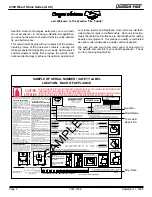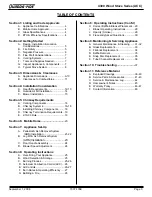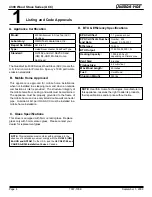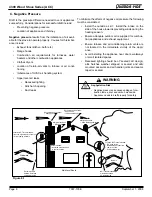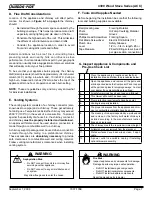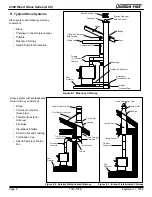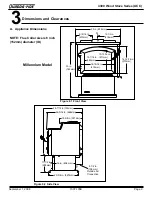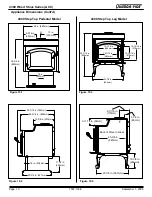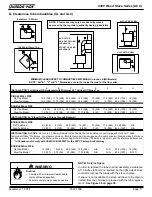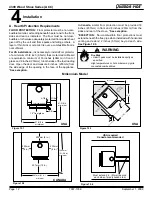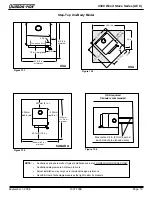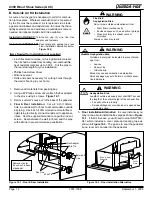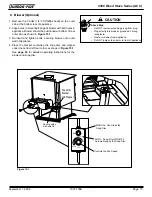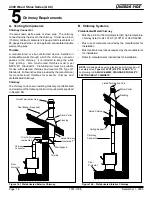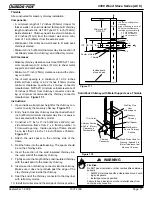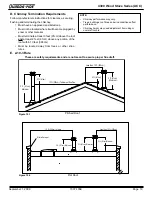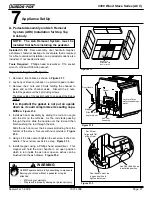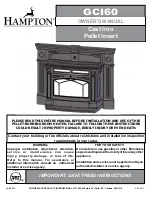
Page 6
7037-135E
September 1, 2008
R
4300 Wood Stove Series (ACC)
Marginal Location:
• Below peak
Location NOT recommended:
• Not the highest point of the roof
• Wind loading possible
Multi-level Roofs
Windward
Leeward
Recommended:
Outside Air Intake
on windward side
NOT recommended:
Outside Air Intake
on leeward side
Recommended Location:
• Above peak
Recommended:
• Insulated exterior chase
in cooler climates
Recommended Location:
• Above peak
• Inside heated space
Location NOT recommended:
• Too close to tree
• Below adjacent structure
• Lower roof line
• Avoid outside wall
Marginal Location:
• Wind loading possible
Figure 6.1
C. Negative Pressure
Draft is the pressure difference needed to vent appliances
successfully. Considerations for successful draft include:
• Preventing negative pressure
• Location of appliance and chimney
Negative pressure
results from the imbalance of air avail
-
able for the stove to operate properly. Causes for this imbal
-
ance include:
• Exhaust fans (kitchen, bath) etc.)
• Range hoods
• Combustion air requirements for furnaces, water
heaters and other combustion appliances
• Clothes dryers
• Location of return-air vents to furnace or air condi
-
tioning
• Imbalances of HVAC air handling system
• Upper level air leaks
• Recessed lighting
• Attic hatch opening
• Duct leaks
To minimize the affects of negative air pressure the following
must be considered:
• Install the outside air kit. Install the intake on the
side of the house towards prevailing winds during the
heating season.
• Ensure adequate outdoor air is supplied for combus
-
tion appliances and exhaust equipment.
• Ensure furnace and air conditioning return vents are
not located in the immediate vicinity of the appli
-
ance,
• Avoid installing the appliance near doors, walkways
or small isolated spaces.
• Recessed lighting should be of “sealed can” design;
attic hatches weather stripped or sealed; and attic
mounted duckwork and air handler joints and seams
taped or sealed.
WARNING
• Negative pressure can cause spillage of com
-
bustion fumes, soot and carbon monoxide.
• Appliance needs to draft properly for safety.
Asphyxiation Risk.


